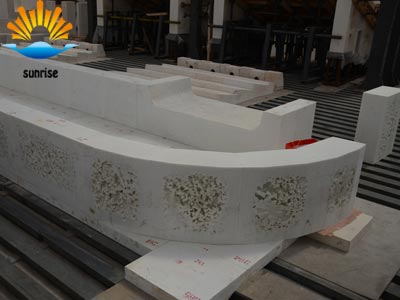Product
Fused Cast AZS Block
AZS Casting Type
AZS Ramming Materials
Fused Cast AZS TY-AZS41
Fused Cast AZS TY-AZS36
Fused Cast AZS TY-AZS33
Fused Cast Alumina Block
Fused cast Alumina Block TY-H
Fused cast Alumina Block TY-A
Fused cast Alumina Block TY-M
Fused Cast High Zirconia Block
Fused Cast Skid Rail Block
Silica brick
Magnesia Series Brick
Bonded Refractory Block
High alumina And Fire clay bricks
Insulation Series Brick
Ceramic Fiber Products
Contact Details
- 0086 371 63838939
- 0086 371 63835539
- sales@sunriserefr.com
- tkfanyi
- No.36 Fengchan Road, Zhengzhou City
Solutions
How to choose refractories for furnace
- More related products
- Fused Cast AZS Block
- Fused Cast Alumina Block
- Fused Cast High Zirconia Block
- Fused Cast Skid Rail Block
The main performance of the kiln is mainly determined by the technical and economical performance of the refractories, which directly affects the investment cost, work performance, thermal efficiency, and energy consumption of the kiln. The general principle of choosing refractory materials:
1, the furnace performance and thermal characteristics. Kilns with intermittent work should use materials with low heat capacity.
2, the safe use of materials temperature, thermal conductivity, high temperature strength, chemical stability.
3, the use of life.
4, investment costs and operating maintenance costs.
In general, heavy refractory materials focus on a certain technical performance index, such as high temperature stability, chemical stability, etc.; lightweight insulation materials pay more attention to the integrated technical and economic indicators of input and operation.
When using lightweight insulation materials, it is generally determined by the thermal conductivity of the insulation material (λ) and the cost per unit volume of insulation material (Ρ). The smaller the value of the product of “λΡ”, the better. The small value of the thermal conductivity indicates that the thermal insulation material has a good thermal insulation effect and the energy cost during operation is low. The low cost per unit volume of insulation material indicates that the investment cost is low and has a good investment and economic effect. It can be selected by coordinate graphical method. The abscissa is the working temperature and the ordinate is the product of (λΡ). The curve of each material is intercepted by the safe use temperature of the material, and the material with good technical and economic performance is selected.

Read more
Need more information? Drop us a line
For more information on any of our products please get in touch using the form below. One of our sales team will respond to your enquiry as soon as possible.
Copyright © 2014 Zhengzhou Sunrise Refractory Co., Ltd. Site Index Product IndexSitemap









